In the aftermath of World War II, the world was grappling with the shocking horrors of the Holocaust. Nestled among the picturesque hills of Bavaria, Germany, Nuremberg became the focal point of international attention as television cameras relayed the proceedings of the momentous International Military Tribunal (IMT) to a global audience. The tribunal, a landmark in the annals of justice, held 24 leading figures of Nazi Germany accountable for orchestrating some of the most egregious crimes against humanity. One notable figure among them was Hermann Goring, the audacious commander of the Luftwaffe, the German Air Force.
Hermann Goring was not just a military commander, but also an influential member of Hitler’s inner circle. His portfolio was diverse and vast; he not only led Germany’s formidable air forces but was also instrumental in shaping the Nazi economic policy through his stewardship of the Four-Year Plan. Moreover, he was perceived as Hitler’s heir apparent and was deeply embedded in the Nazi political apparatus. His role in the Nazi regime was multifaceted and his influence, extensive.
The IMT meticulously examined the evidence and in a seminal judgment, convicted Goring of crimes against humanity, sentencing him to death. However, in a final act of defiance, Goring managed to elude the hangman’s noose by taking his own life in his prison cell on the eve of his scheduled execution.
One intriguing episode during the trial was a statement attributed to Goring, the authenticity of which has been debated. When questioned on how the Nazi leadership persuaded the German populace to accept its oppressive regime and policies, Goring’s alleged response was:
It was easy and has nothing to do with Nazism; it has to do with human nature. You can do this in a Nazi regime, socialist, communist, in a monarchy or democracy: the only thing a government needs to turn people into slaves is fear. If you can find something to scare them you can make them do anything you want.
In today’s evolving global landscape, the resonance of these words is undeniably amplified, attaining a relevance that transcends the era in which they were spoken. Undeniably, fear has been an indelible fabric of human existence, guiding the narratives of our lives since time immemorial. From apprehensions about illness, war, poverty, economic instability, to trepidations surrounding international relations, the litany of anxieties seems endless. However, the conjunction of the COVID-19 pandemic with the alarming surge of authoritarian governance worldwide has heralded an unprecedented manipulation of fear.
It begs the question: What drove the citizens of Germany during World War II to remain compliant, even in the face of the horrendous genocide of over 6 million Jews, and millions of others, including Catholics, between 1933 and 1945?
It is conceivable that aside from indoctrination, a potent catalyst in tempering the moral compass of a nation was fear. This fear, fueled by propaganda and lack of information, can be corrosive. However, fear also has a duality; it can be paralyzing, yet it can serve as a catalyst for decisive action.
We find ourselves at a crossroads in the face of the unknown. The emergence of a novel virus, whose course was uncertain, engendered a global climate of fear and uncertainty. A fear further exacerbated by the whirlwind of information and misinformation.
I recognize that a considerable number of us were wary from the beginning, suspecting that there might be more than meets the eye concerning the pandemic. I count myself among the naturally skeptical, driven by an insatiable quest for knowledge. My journey led me to embark on rigorous research, seeking to distill truth from the cacophony of narratives propagated by mainstream channels.
Venturing down the rabbit hole, my relentless pursuit unearthed insights that did not quench my thirst for clarity but rather invoked a cascade of questions. In continuation of my previous post, I felt compelled to delve deeper into the veracity of the pandemic and scrutinize the purported opacity within the scientific, pharmaceutical, and medical communities regarding the virus and vaccines that brought the world to a precipice.
The Real Fraudsters
In a thought-provoking article published in March 2020, Dr. Stefan Lanka, a German medical doctor with a background in virology, audaciously undertook a critical examination of the role of virologists in the ongoing pandemic. Intriguingly, as a member of the virology community, his willingness to critically evaluate his own field raised eyebrows. The earnestness with which he dissected the practices within his sphere of expertise was both commendable and astonishing. However, it was a specific declaration made by Dr. Lanka that seized my attention and spurred a cascade of reflections:
“Virologists have never isolated a complete hereditary strand of a virus.”
Dr. Stefan Lanka
Dr. Lanka’s assertion warrants closer scrutiny. Elaborating on his point, he contends, “In instances where particles are identified as viruses through a process known as negative staining, there is a significant deviation from established protocols. Ideally, these particles should be concentrated, purified, and isolated via density gradient centrifugation, which is designed for this purpose. However, the actual practice involves merely sedimenting them through basic centrifugation, causing them to collect at the bottom of the centrifuge tube (a process called pelletization). Subsequently, they are examined under an electron microscope. Astonishingly, there is no record of these structures, labeled as viruses, undergoing biochemical characterization to confirm their composition. A thorough review of publications where structures are designated as viruses based on electron microscopy will reveal that the virology community, perhaps inadvertently, has cast doubt on their own assertions regarding the existence of viruses through their methodologies.”
While the passage is laden with technical terms, I cannot stress enough the value of reading Dr. Lanka’s article in its entirety. I have taken the liberty to highlight key segments below for your convenience:
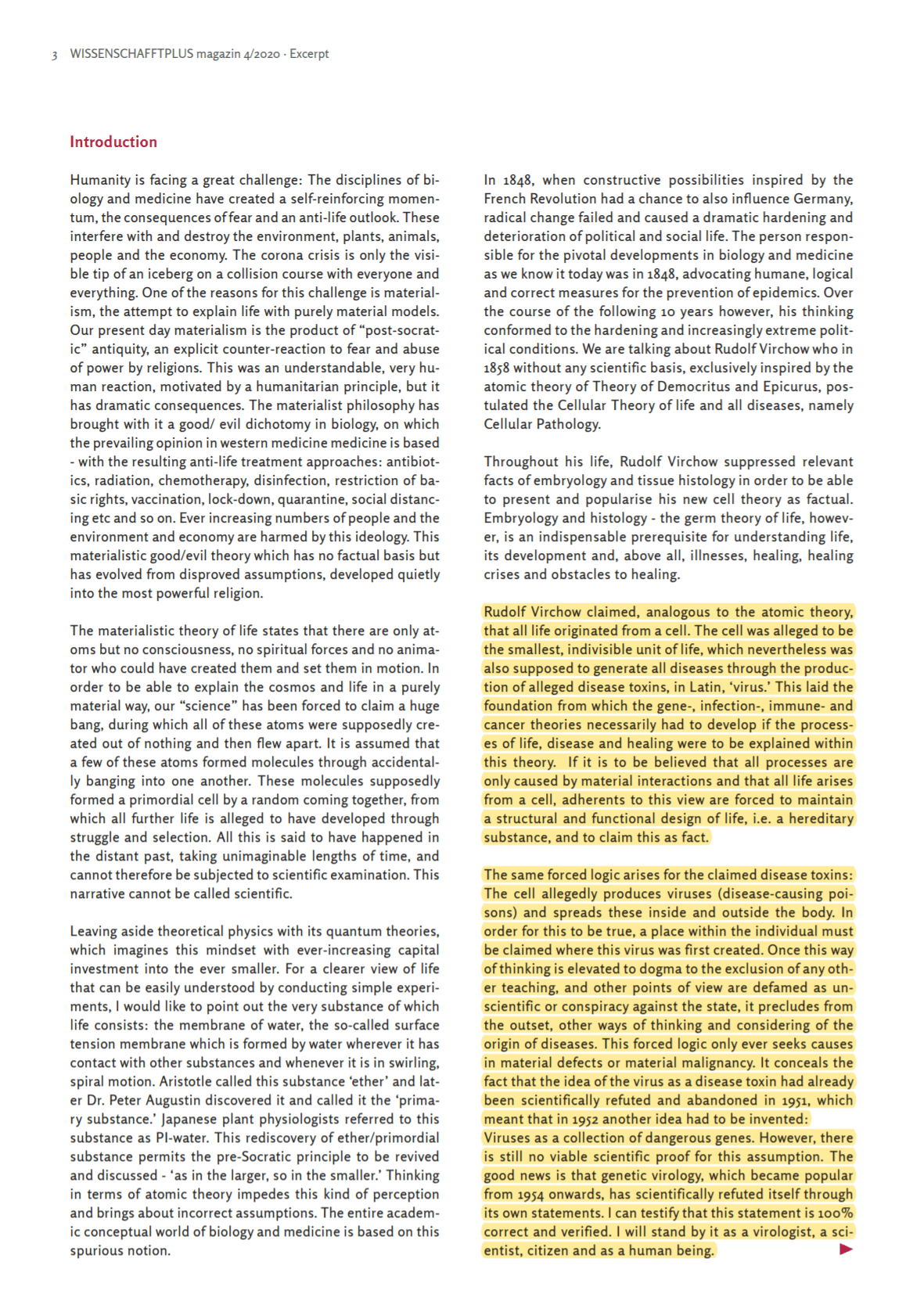
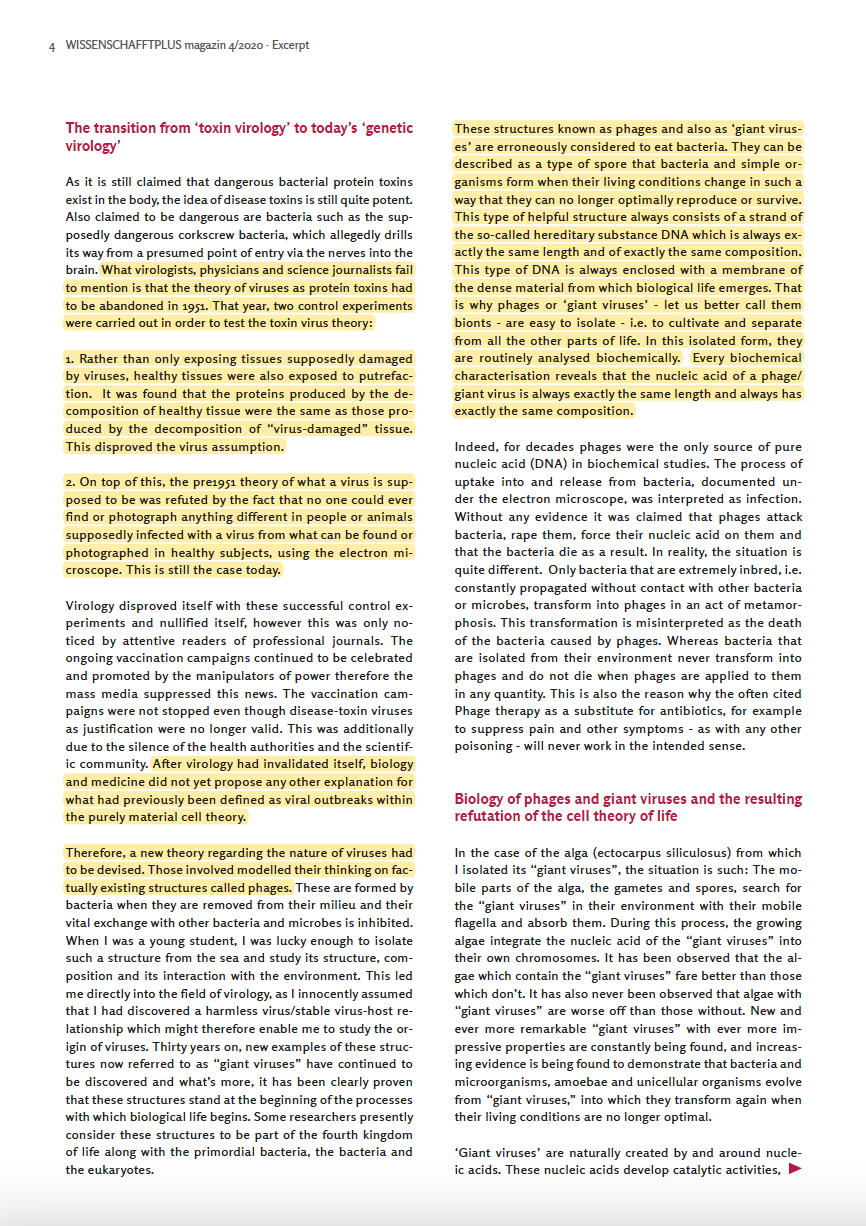
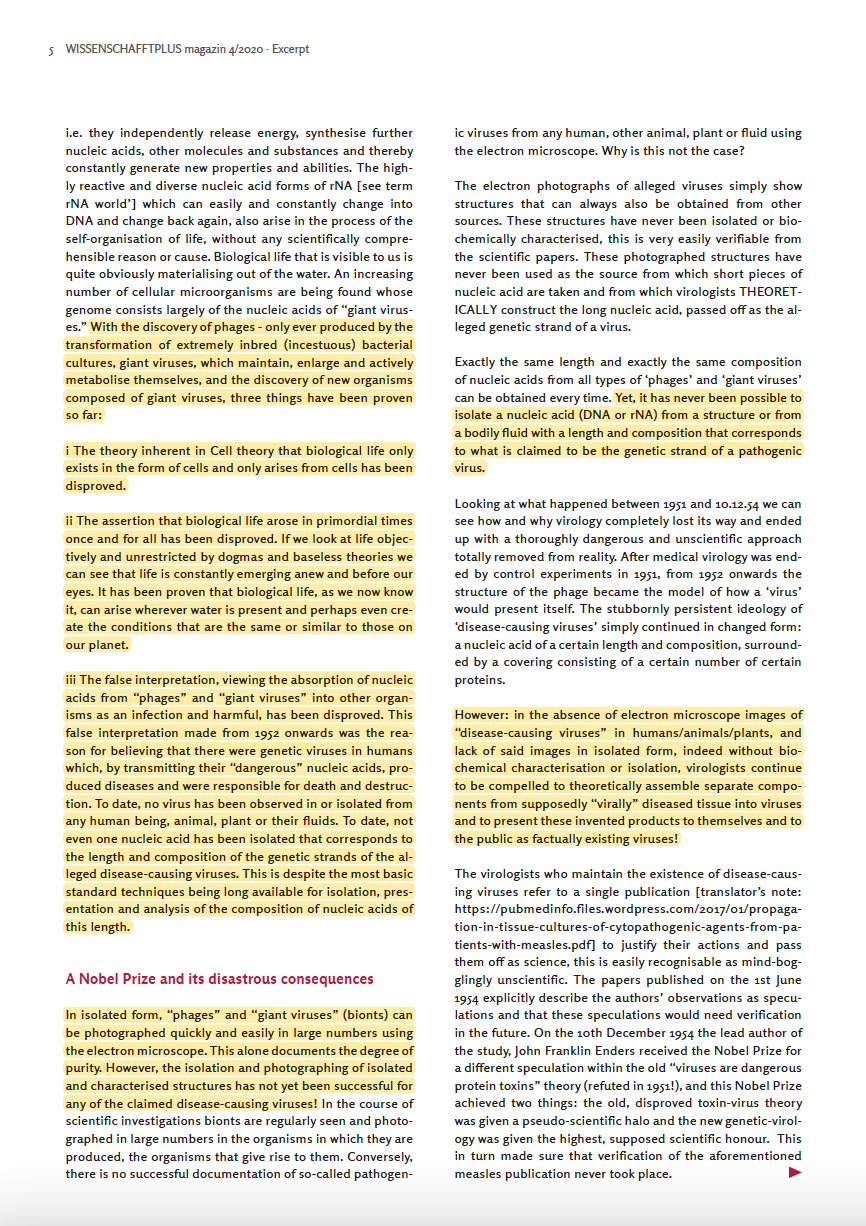
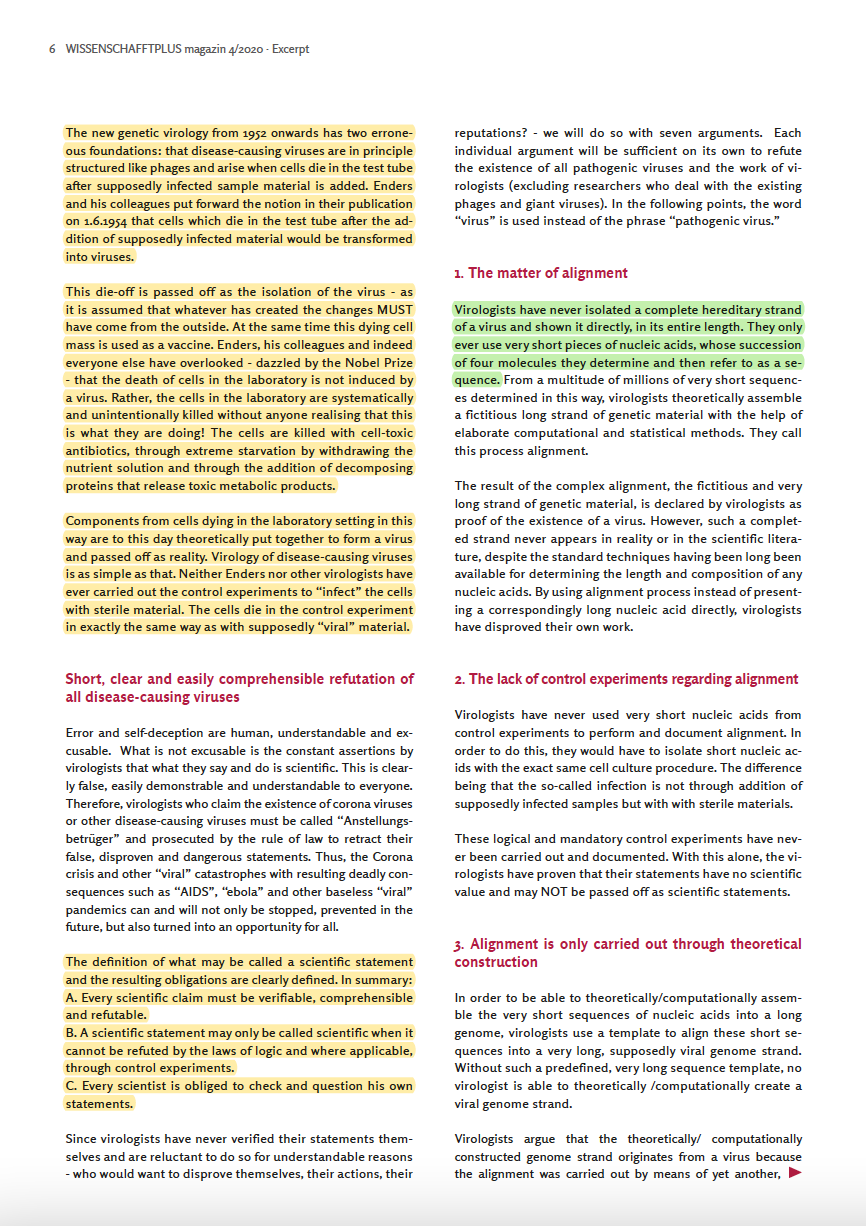
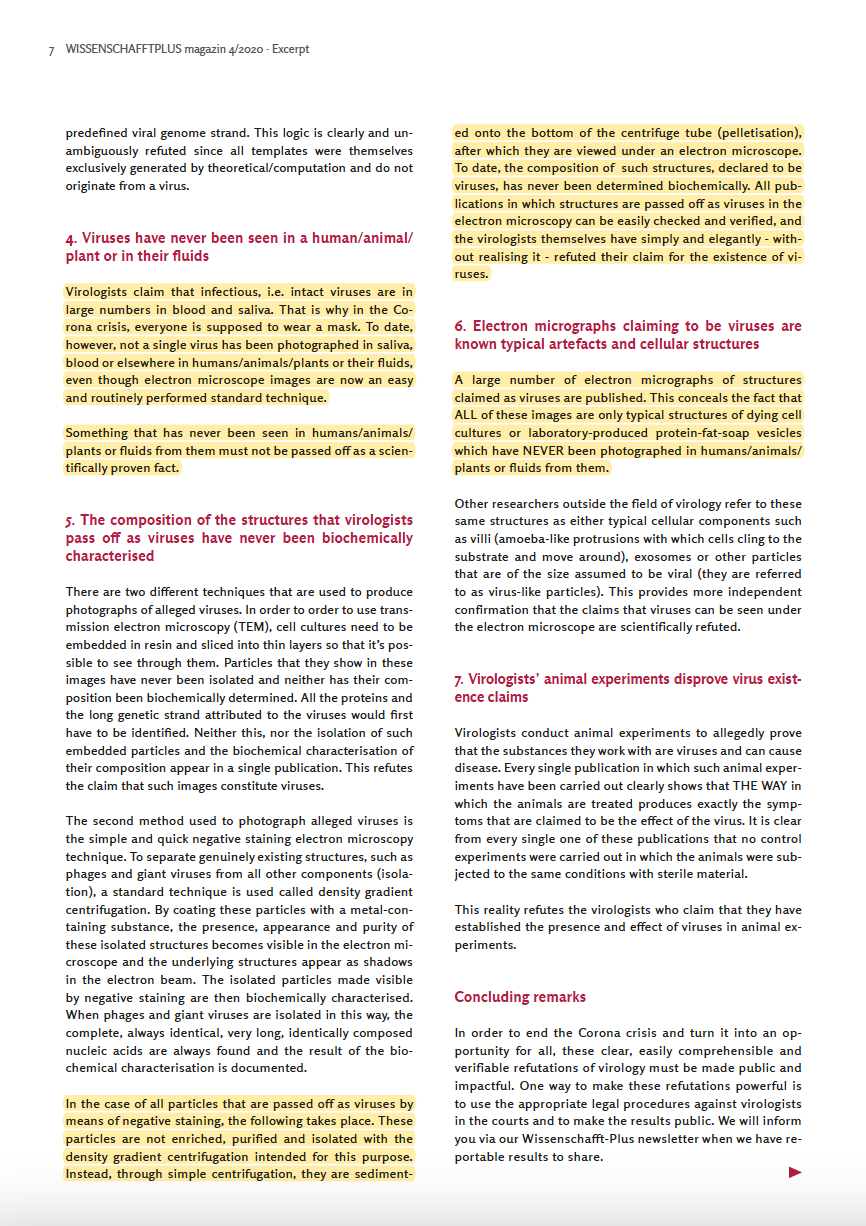
What do these revelations imply for our collective comprehension of viruses? Should Dr. Lanka’s assertions hold water, they threaten to radically upheave our foundational understanding of cell biology, healing processes, and the genesis of diseases. The ramifications of such a paradigm shift are vast and far-reaching, too extensive to be encapsulated within the confines of this article, and necessitate rigorous, open-ended inquiry. A vital corollary to consider is the potential impact on medical practice. One could venture into the historical underpinnings of modern medicine by examining the patronage extended to American medical schools by John Rockefeller and Andrew Carnegie, which bears relevance to the present discourse.
Notably, the Centers for Disease Control and Prevention (CDC) seems to be on precarious ground when it comes to countering Dr. Lanka’s propositions. Before delving into the CDC’s stance, it is imperative to unpack the concept of “virus isolation” as alluded to by Dr. Lanka, as this could be the linchpin in deciphering the enigma surrounding the pandemic.
To elucidate this concept, we consult Dr. Andrew Kaufman and Dr. Thomas Cowan, both esteemed figures in their respective fields. In their cogent “Statement on Virus Isolation,” they address an ongoing debate, one that may not be in the limelight but is of critical importance: the question of whether SARS-CoV-2 has ever been genuinely isolated. They delineate the process of isolation as follows:
Initially, samples such as blood, sputum, or secretions are collected from a substantial cohort (for instance, 500 individuals) displaying symptoms distinct and specific enough to characterize an illness. Crucially, without contaminating these samples with any tissue or substances containing genetic material, the virologist undertakes a process of maceration, filtration, and ultracentrifugation to purify the specimen. This technique, a staple in virology laboratories for isolating bacteriophages and so-called giant viruses, enables the visualization through electron microscopy of thousands of particles with uniform size and shape. These are the isolated and purified viruses in question.
Subsequently, these identical particles are subjected to rigorous assessment for uniformity utilizing physical and/or microscopic techniques. Once the purity is ascertained, an in-depth characterization of the particles commences. This involves examining the structure, morphology, and chemical makeup of the particles. Furthermore, the genetic composition is discerned by extracting genetic material directly from the purified particles, employing genetic sequencing methods such as Sanger sequencing, a technique that has been a mainstay for decades. It is essential then to determine that these uniform particles originate externally, in congruence with the concept of viruses, as opposed to being by-products of cellular degradation. It’s noteworthy that as of May 2020, discerning whether the observed particles are viruses or merely cellular breakdown products remains an unresolved challenge within virology.
In conclusion, it is prudent to exercise critical evaluation when presented with literature claiming the isolation of the SARS-CoV-2 virus. One must meticulously examine the methods section to ascertain the robustness and integrity of the isolation process described.
Footnotes:
1 Isolation, characterization and analysis of bacteriophages from the haloalkaline lake Elmenteita, KenyaJuliah Khayeli Akhwale et al, PLOS One, Published: April 25, 2019. https://journals.plos.org/plosone/article?id=10.1371/journal.pone.0215734 — accessed 2/15/21
2 “Extracellular Vesicles Derived From Apoptotic Cells: An Essential Link Between Death and Regeneration,” Maojiao Li1 et al, Frontiers in Cell and Developmental Biology, 2020 October 2. https://www.frontiersin.org/articles/10.3389/fcell.2020.573511/full — accessed 2/15/21
3 “The Role of Extracellular Vesicles as Allies of HIV, HCV and SARS Viruses,” Flavia Giannessi, et al, Viruses, 2020 May
The absence of documentation affirming the isolation and purification of the SARS-CoV-2 virus through time-honored scientific methodologies begs a fundamental question: Can we, with unwavering certainty, attribute the virulence and lethality associated with this health crisis to a pathogen whose isolation is not adequately documented? If the isolation of the SARS-CoV-2 virus remains unverified, it casts doubt upon the nature of the pathogen that PCR tests have been detecting. This conundrum becomes even more perplexing in light of the announcement by the CDC and FDA that they will transition away from relying solely on PCR tests as of December 31, 2021. They cite the necessity for more sophisticated, “multiplexed methods” that can discern between influenza and SARS-CoV-2 with greater precision. Source: CDC.

In the accompanying video, Dr. Tom Cowan, a distinguished American physician, elucidates the intricacies of the virus isolation and purification process. Moreover, he critically examines the rationale behind the imposition of lockdowns, and casts a discerning eye on the pervasive apprehension surrounding a “virus.” Dr. Cowan raises an alarm over the purported lack of empirical evidence to substantiate the existence of this virus, or its causal relationship with the disease and symptoms ascribed to what has been labeled as COVID-19. Here is the video:
“Show me the money virus!”
In a cogent summary report published on September 22, 2020, Diatherix Eurofins Laboratory reveals intriguing findings regarding their execution of a SARS-CoV-2 assay — an elegant term essentially meaning “clinical analysis.” This assay focused on the efficacy of PCR tests in detecting and identifying SARS-CoV-2 and was conducted under the Emergency Use Authorization (EUA) granted by the FDA. Remarkably, within a segment of the report labeled “Performance Evaluation,” the laboratory candidly acknowledges, “no quantified viral isolates were available at the time of the study…” This revelation warrants a critical inquiry: How can medical professionals and researchers have championed the PCR tests as the pinnacle of accuracy in detecting SARS-CoV-2, when no isolated and purified virus was available to benchmark the reliability of these tests?
Delving deeper into the labyrinthine uncertainties surrounding this controversial pandemic, Ms. Christine Massey, a biostatistician with expertise in cancer research hailing from Canada, has meticulously compiled responses acquired through a litany of Freedom of Information Act (FOIA) petitions. A staggering 127 institutions globally, including the venerable CDC, have been unable to furnish documentation corroborating the isolation or purification of SARS-CoV-2 in alignment with the methodology articulated by Drs. Kaufman and Cowan.
Over an extended period culminating in October 28, 2021, Ms. Massey, in collaboration with like-minded colleagues, directed queries to the CDC. These sought to elicit evidence supporting the isolation and existence of a spectrum of pathogenic viruses, encompassing SARS-CoV-2, MERS, Influenza, Polio, Measles, HIV, XMRV, HTLV-1, HTLV-III/LAV, HPV, Ebola, and Zika. The entreaties extended to Mr. Robert Andoh, the CDC’s Chief FOIA Officer, beseeching him to divulge records, research, or findings pertaining to any isolation or purification of “viral” agents from patient samples. This encompasses maceration (a process that entails softening and breaking down), filtration, and/or utilization of an ultracentrifuge — protocols often heralded as the ‘Gold Standard’ in isolating and pinpointing pathogenic microorganisms.
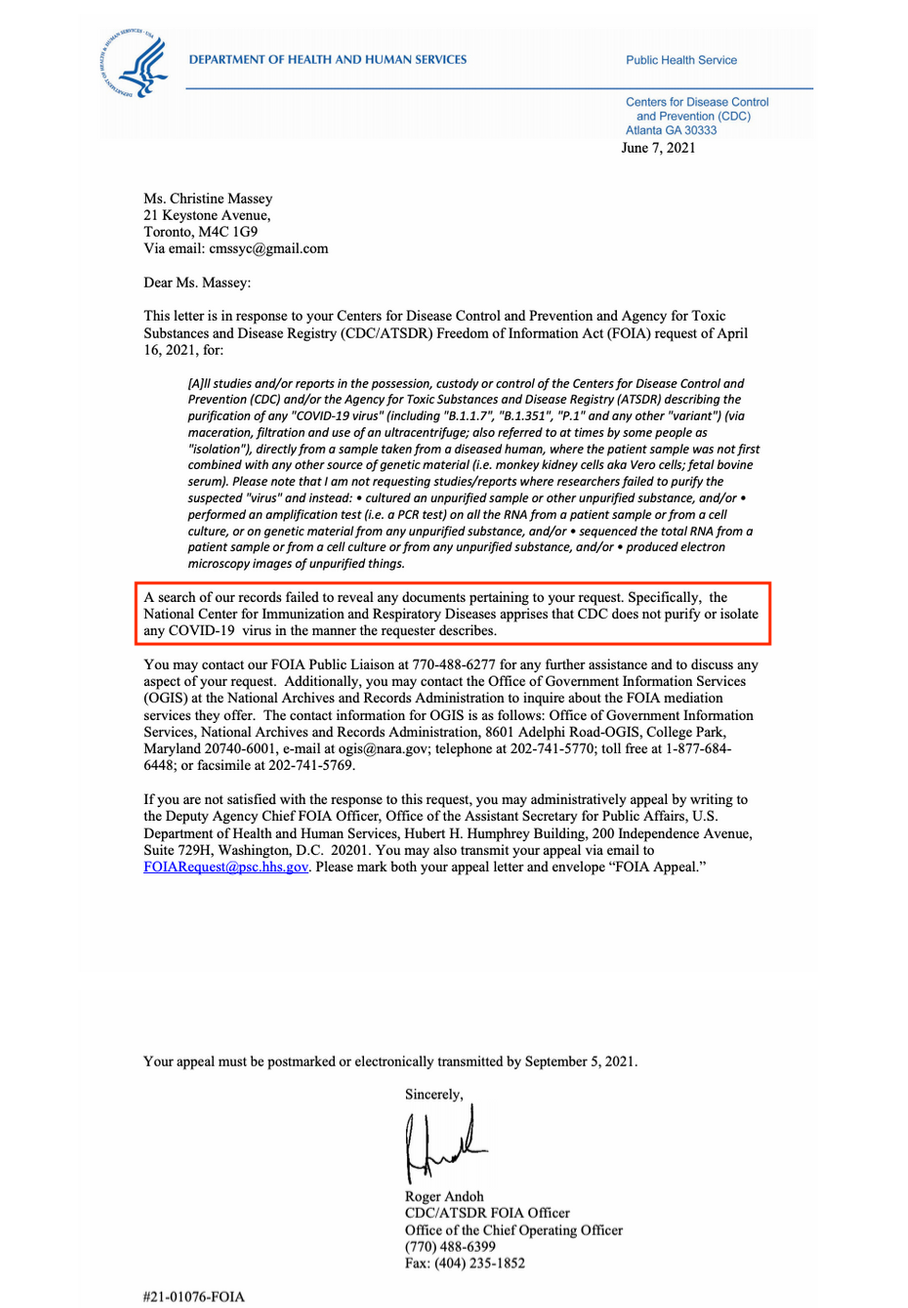
The ‘Gold Standard’ of viral isolation – as described by Drs. Kaufman and Cowan above – is based on what’s known as the Koch and Rivers postulates for identifying and isolating microbes (see below).
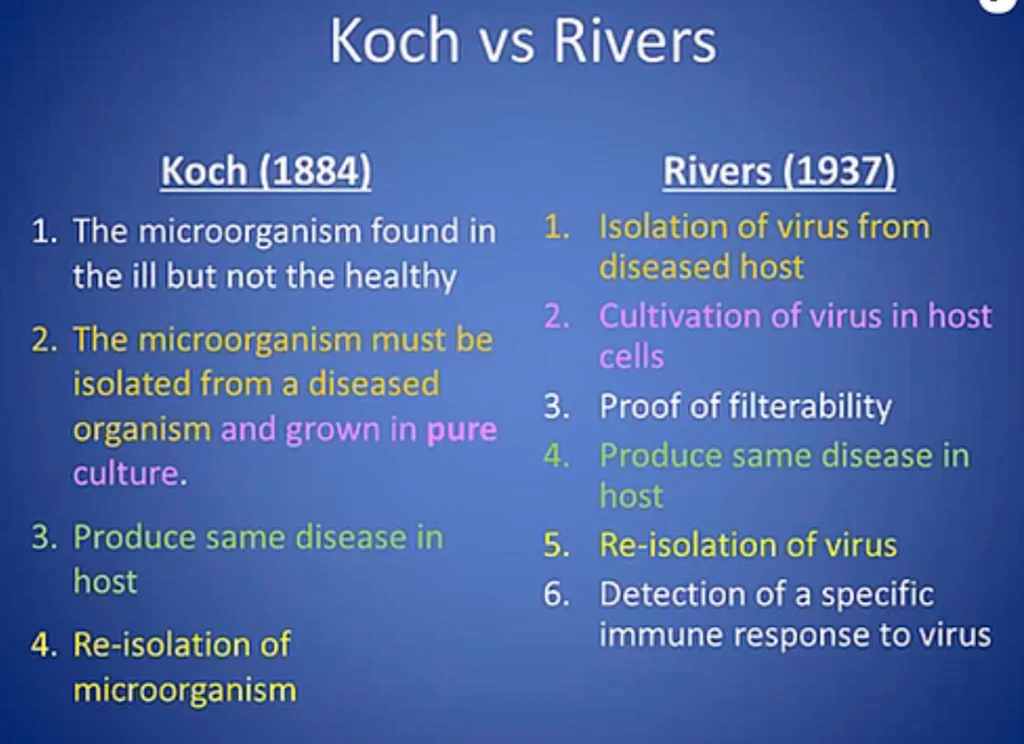
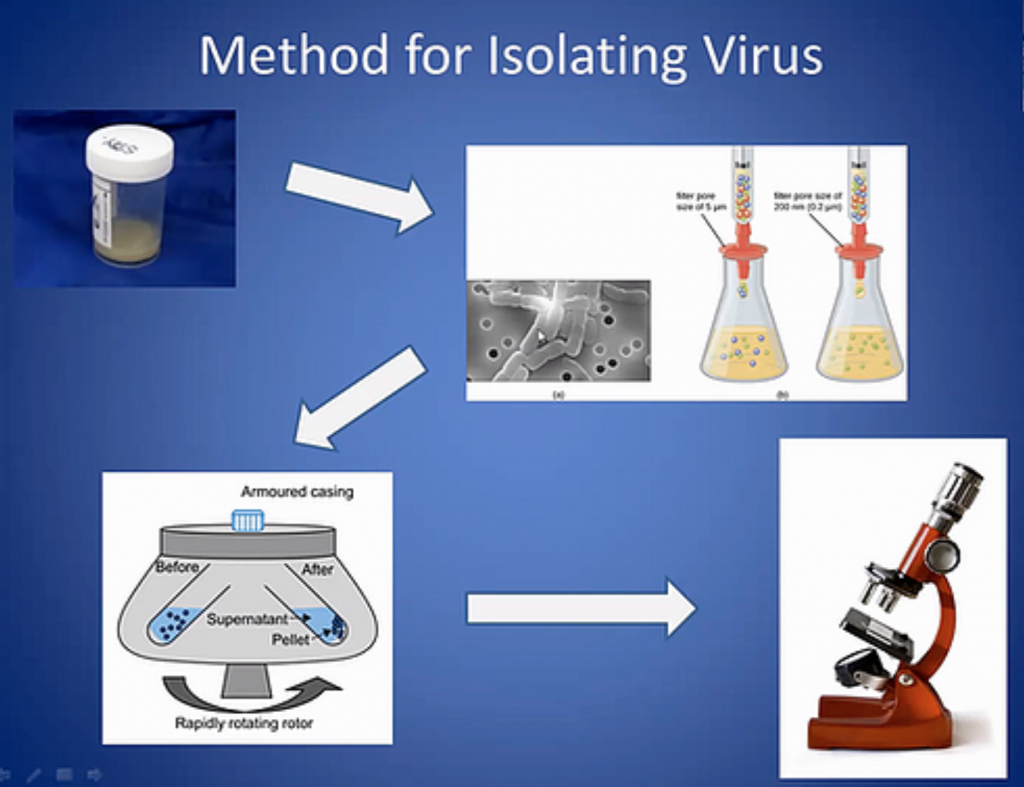
Ms. Massey’s inquiries were remarkably comprehensive, as she clarifies that her requests were not confined to records of isolation undertaken solely by the respective institution, nor were they restricted to records authored by the institution in question. Instead, they were expansive in scope, encompassing any records pertaining to the isolation or purification of the “COVID-19 virus” (alternatively known as SARS-CoV-2) conducted by any entity, at any point in time, and anywhere globally.
Astoundingly, not a single one of the 127 institutions from which Ms. Massey received responses could furnish or reference any document that delineates the isolation or purification of the purported “COVID-19 virus” obtained directly from a patient sample, which was unadulterated by other genetic material. It should be noted that such adulterants typically include cultures derived from monkey kidney cells, known as “Vero” cells, and fetal bovine serum.
Click here for an aggregated collection of the responses garnered by Ms. Massey and her collaborators spanning from February 2021 to October 2021.
This gaping absence of evidence from the CDC and other esteemed health institutions begs the question: what are the implications for our contemporary understanding of virology and cellular pathology? If these pivotal entities are unable to present proof of an isolated “COVID-19 virus,” let alone for any of the other pathogenic viruses implicated in recent pandemics, this calls into question the very foundation upon which we build our knowledge and shape our responses to viral diseases. What, then, must be the course of action to rigorously examine and possibly reassess the paradigms that guide our understanding and handling of virology?
No “Gold Standard” for Testing
Governments and health organizations across the globe appear to have anchored their policies and guidelines on science that seems incomplete at best. They have primarily relied on a single study titled “Detection of 2019 Novel Coronavirus (2019-nCoV) by real-time RT-PCR” (source). The authors of the study explicitly state that the objective was to “develop and deploy a robust diagnostic methodology for use in public health laboratory settings without having virus materials available.” Furthermore, their methodology hinged on the “close genetic relatedness of 2019-nCoV with SARS coronavirus, utilizing synthetic nucleic acid technology.”
This revelation is rather alarming. The authors candidly acknowledge that they did not have access to the isolated SARS-CoV-2 virus. This raises fundamental questions: If the virus was not isolated, what precisely does the test aim to detect? Conventionally, developing a diagnostic test for a specific virus is predicated on having isolated and characterized the virus in question, as this is essential for calibrating the test to accurately identify the presence of that virus. However, in this instance, that crucial step seems to be conspicuously absent.
This lack of virus isolation is a significant concern as it raises doubts about the very foundation of the diagnostic process. Without the virus being isolated, questions emerge regarding the specificity and reliability of the tests. What are they calibrated against? How can we be certain that they are detecting SARS-CoV-2 and not some other genetic material? The gravity of these questions cannot be overstated, especially given the global scale of the response to the pandemic.
The policies and actions taken in response to the COVID-19 pandemic have had far-reaching consequences. It is essential that the science informing these policies is rigorously verified and based on a complete understanding of the virus and its behavior.

However, at a media briefing on COVID-19 back on March 16, 2020, the WHO Director General Dr. Tedros Adhanom Ghebreyesus let out the clarion call of the entire pandemic:
We have a simple message for all countries: test, test, test.
The news cascaded across mainstream media channels globally, including Reuters and the BBC, giving impetus to a movement that, it seems, lacked foundational scientific merit from the outset. It is worth noting that Dr. Kary Mullis, who was awarded the Nobel Prize for inventing the Polymerase Chain Reaction (PCR) technology, had clarified that PCR was not designed as a diagnostic tool for detecting viruses. Dr. Mullis passed away in August 2019. Celia Farber’s article presents an insightful perspective on Dr. Mullis and includes an intriguing analysis on the contentious use of PCR testing during the 1980s in the context of HIV/AIDS.
So, what are the implications if health agencies worldwide, including the CDC, are unable to furnish documentation demonstrating the isolation of the virus despite extensive testing over an extended period? The gravity of this question is immense.
Should the information mentioned above hold true, it would logically follow that without the critical steps of isolating, identifying, purifying, and analyzing the biochemical composition of a virus, there is no verifiable means to ascertain the existence of the so-called “COVID-19 virus.” There, the implications have been spelled out.
Furthermore, it’s important to consider expert opinions. Dr. Sanjaya Senanayake, an Australian infectious disease specialist, raised concerns regarding the accuracy of COVID-19 testing during a 2020 interview with ABC. When asked, “How accurate is the [COVID-19] testing?” he responded:
If we had a new test for picking up [the bacterium] golden staph in blood, we’ve already got blood cultures, that’s our gold standard we’ve been using for decades, and we could match this new test against that. But for COVID-19 we don’t have a gold standard test.
Dr. Senanayake’s statement is supported by Jessica B. Watson, a GP and National Institute for Health Research doctoral research fellow from Bristol University (England) in a study published in the British Medical Journal, where she states that there is a “lack of such a clear-cut ‘gold-standard’ for COVID-19 testing.”
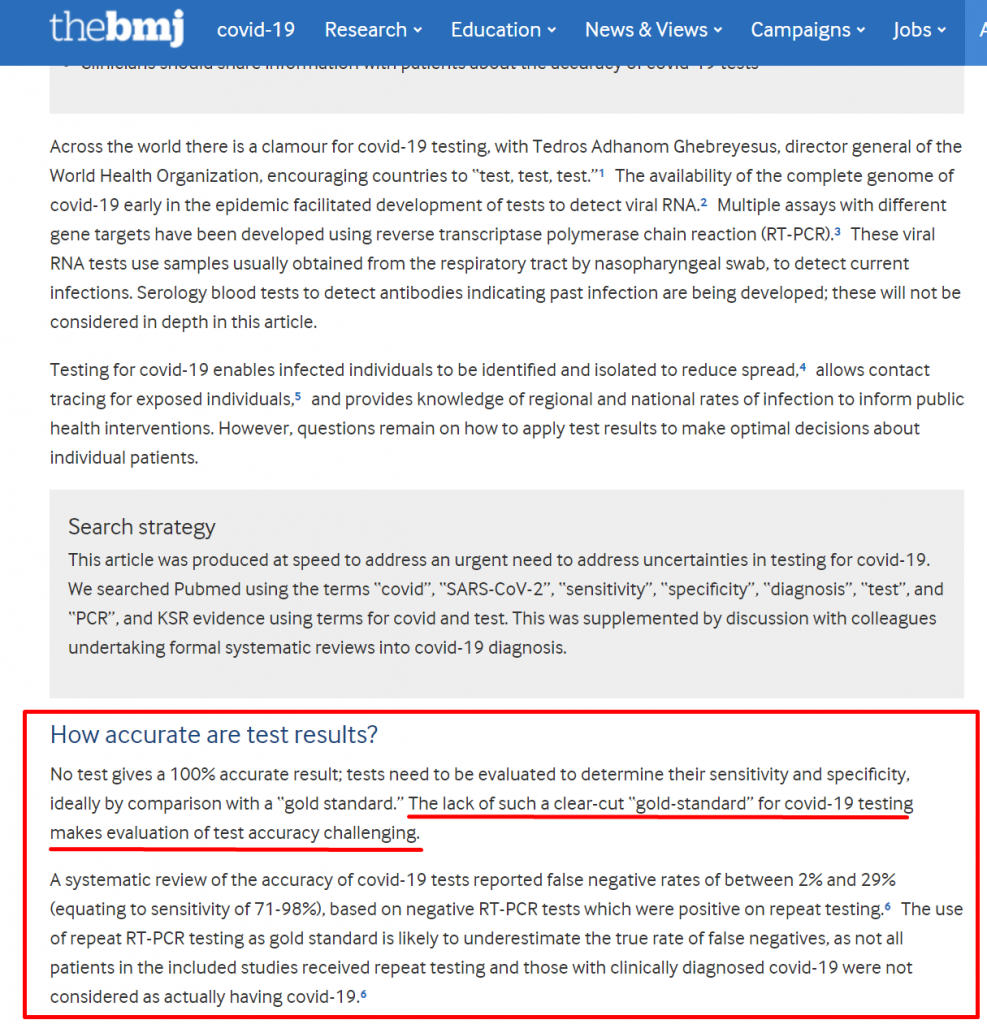
The Pandemic’s Magic Wand
Furthermore, it is important to underscore the significance of viral particle purification and isolation, a concept highlighted in standard virology references, such as White and Fenner’s ‘Medical Virology’ (1986). Notable virologists like the late Luc Montagnier and Dominic Dwyer, as well as Dr. Robert Young, assert that particle purification is vital for verifying the existence of a virus. As Dr. Young elucidates, this purification is crucial to establish that the RNA or DNA sequences detected belong to the virus in question.
This necessity arises from the highly sensitive nature of PCR tests, which can detect minuscule amounts of DNA or RNA. However, PCR tests, due to their design, cannot ascertain the origin of these genetic fragments. Dr. Young emphasizes that it is imperative to determine the source of these particles beforehand.
Continuing on this point, Dr. Young clarifies, “PCR tests are calibrated for gene sequences (in this case, RNA sequences because SARS-CoV-2 is thought to be an RNA virus). To confirm that these gene fragments are part of the sought-after virus, proper isolation and purification of the presumed virus must be conducted.”
In light of this, it is noteworthy that even the Centers for Disease Control and Prevention (CDC) acknowledges this aspect in its document titled ‘2019-Novel Coronavirus (2019-nCoV) Real-Time RT-PCR Diagnostic Panel.’ Specifically, the document states:
Detection of viral RNA may not indicate the presence of infectious virus or that 2019-nCoV is the causative agent for clinical symptoms”
AND
This test cannot rule out diseases caused by other bacterial or viral pathogens.


Click here to download the full document
And the Food and Drug Administration (FDA) also admits that “positive results […] do not rule out bacterial infection or co-infection with other viruses. The agent detected may not be the definite cause of disease.” (see below)


And remarkably, in the instructions for use that come with PCR tests manufactured by Altona Diagnostics it clearly states that the tests are “For research use only (RUO)! Not for use in diagnostic procedures.” In other words, PCR tests are meaningless in the fight against a pathogenic virus we can’t seem to identify or understand its biochemical composition so we can know what it actually does.

Click here to download full document
If, indeed, scientists from organizations such as the CDC, FDA, WHO, NIH, and other institutions globally have not been able to confirm the existence of the SARS-CoV-2 virus through traditional isolation and purification techniques, this raises pressing questions about the nature of the virus and the global response to it. Specifically, what exactly is the entity against which the global population is being vaccinated?
Such circumstances invite scrutiny of the role of major health organizations and the media. It is important to critically assess whether there has been a comprehensive and transparent dissemination of information, or whether the urgency of the situation may have led to oversights and possibly even misinformation.
As we examine these questions, it is essential to investigate the true nature of SARS-CoV-2. If it has not been adequately isolated and identified, what is its actual origin? And more importantly, is it indeed responsible for the symptoms and fatalities associated with COVID-19? If not, then identifying the true cause becomes a matter of utmost priority.
Moreover, it is crucial to understand the rationale behind the CDC and FDA’s decision to phase out the use of PCR tests in favor of methods that can more effectively differentiate between influenza and SARS-CoV-2. Was there a possibility that the global response was, in part, reacting to an atypical seasonal influenza? Furthermore, did elements such as fear, panic, and lockdowns contribute to the situation, potentially affecting access to healthcare for other critical conditions?
It is imperative that these questions be addressed with rigorous scientific scrutiny and transparency. The world deserves clear answers and understanding, especially in light of the profound impact that the pandemic has had on societies globally. Only with thorough, unbiased investigation and open communication can we learn from these events and be better prepared for future challenges.
Smoke & Mirrors
Besides testing, another deceptive mechanism in this pandemic was demonstrated by the dictates of the World Health Organization’s push to record every death from the outset as a “COVID death.” Not only was this careless but utterly deceitful on their part.

Click here to download full document
Dr. Stoian Alexov, who served as the president of the Bulgarian Pathology Association, expressed strong criticism of the World Health Organization (WHO), voicing concerns regarding the basis on which the WHO designated the situation as a pandemic. His stance emphasizes the importance of solid, transparent, and verifiable scientific data in validating the existence of a pandemic.
In a webinar interview from May 2020, alongside Dr. Stoycho Katsarov, who is the chair of the Center for Protection of Citizens’ Rights in Sofia and has served as a Bulgarian deputy minister of health, Dr. Alexov highlighted the challenges faced by European pathologists in identifying monoclonal antibodies that are specific to SARS-CoV-2. Typically, antibodies will bind to the pathogens they are designed to target, and over time, these can be identified microscopically. The inability to isolate specific antibodies raises critical questions regarding the causal relationship between the SARS-CoV-2 virus and the illnesses and deaths attributed to it.
This highlights the importance of reliable testing. For instance, the distribution of more than 3.5 million serology test kits in England was met with criticism regarding their effectiveness. Moreover, these tests have been discussed in the context of ‘immunity passports,’ which are seen as potentially instrumental in managing public health measures. It’s important to consider the implications of such passes, especially when the efficacy of the testing is in question.
Given that the global response to COVID-19 hinges on the accuracy and reliability of tests and the solidity of scientific evidence, it is paramount that the scientific community continues to rigorously examine these aspects. It is essential for public trust that health policies and responses are based on well-substantiated, transparent, and peer-reviewed scientific research.
According to Swiss Policy Research, almost all studies on the infection fatality rate (IFR) have been demonstrated as 0.04 to 0.5%, the median age of which is listed as 80+ years.
Not to mention, the distinction between dying from COVID versus dying with COVID was never clearly defined – which, in my opinion, was done so by design – considering the majority of patients had at least 2-3 comorbidities. There is little doubt that the “COVID death count” was and continues to be inflated worldwide, as healthcare officials in countries across the globe have even admitted to this as health officials in the U.S., UK, Germany, Ireland and elsewhere defined a “COVID death” as “death by any cause within 28/30/60 days of a positive test.“ See here:
Without drawing the distinction between dying from or dying with COVID it’s no wonder why the “death count” skyrocketed so quickly in such a short period of time. In a briefing note from March 4, 2020, the CDC’s National Vital Statistics System was from the outset emphasizing that “COVID-19 should be reported on the death certificate for all decedents where the disease caused or is assumed to have caused or contributed to death.” This verbiage is clearly very loose and introduces the potential for over-reporting, which we already suspected and witnessed.
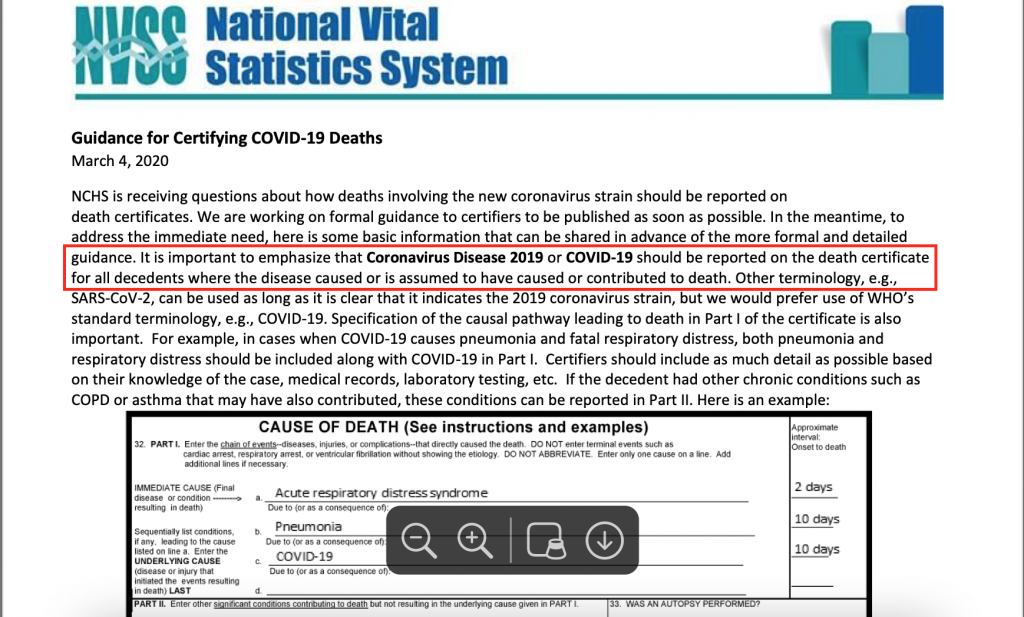
In an article published October 21, 2021, in the Italian newspaper, Il Tempo, it was reported that the Italian Higher Institute of Health has drastically reduced the country’s official COVID death toll number by over 97 per cent after changing the definition of a fatality to someone who died from COVID rather than with COVID. This means that the Institute has reduced the number of people who died from COVID rather than with COVID from its original count of 130,000 to just under 4,000.
If we apply this same calculation to the United States death count of more than 746,000, this would mean that the total deaths attributed to COVID-19 as the only cause would be around 22,000. Sounds to me like a less than mild influenza season. While it has taken a year and a half for the Italian health officials to draw this conclusion, they have basically confirmed what many of us have long suspected – that the pandemic was generated through a fear-by-numbers strategy propagated by the media. This was later confirmed by CNN technical director, Charlie Chester, who was caught on video admitting to the deceptive strategy in a Project Veritas investigative report.
And so, in summary, if indeed we lack the evidence of an isolated SARS-COV2 virus, and the tests we were assured could detect infection were also proven to be insufficient for diagnostic purposes, then how can we confirm that COVID-19 is the cause of a pandemic that shut down a global economy and allegedly claimed the lives of millions worldwide? Answer is: we can’t!
In other words, this is the greatest fraud perpetrated in human history! This is why we can not comply with their vaccines, testing or any other mandates.
As the world awakens from its slumber to confront the criminal actors – the likes of Dr. Anthony Fauci, Dr. Deborah Birx, Dr. Rochelle Walensky, and others – the question in everyone’s mind is whether they will ever be held to account for their actions? As more evidence of their malfeasance continues to surface in these days and weeks ahead, and their testing and vaccine narratives crumble, the people will demand justice and, I believe, we will once again witness another Nuremberg the likes of which we shall not soon forget.
And one day perhaps we will be asked, what made it so easy for the government to force restrictions and inoculations on the people? What made the people desire safety and security over liberty? What was the cause of so much division and tension?
And when Dr. Fauci and his co-conspirators finally take the stand, they too will be asked, “How did you convince the people of the world to accept all of this?” what do you think their answer will be?
F-E-A-R.


